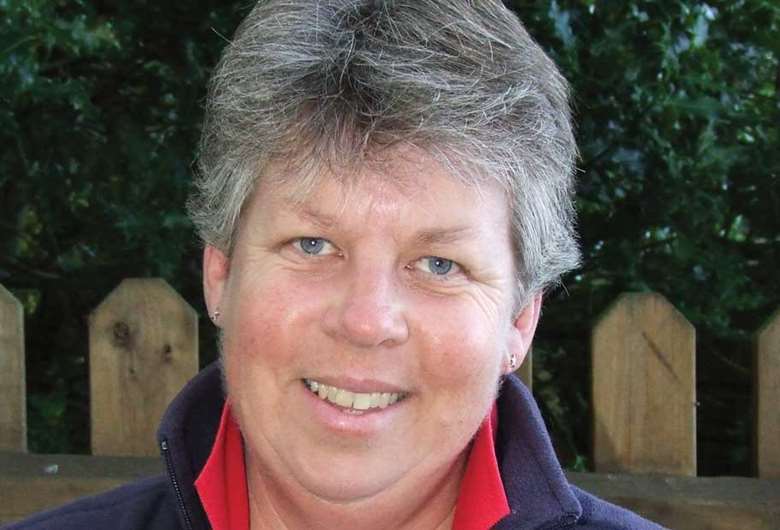My working life ... Forest school leader
Monday, November 3, 2014
Like those working indoors, forest school practitioners must juggle play, learning and development, along with health and safety in an environment that can pose greater hazards.

Sarah Gilding is a forest school leader and early years practitioner at Strawberry Patch Nursery in Norfolk.
'I'm an early years practitioner four days a week, but two mornings I run forest school sessions at the nursery,' she says. 'I began working in the early years after my children were born. Nine years ago, I was offered the chance to go on a Level 1 forest school course. I didn't know what it was - forest school was new to the area. But I've always been an outdoor girl who loved Girlguiding, camping and playing outside, so I said yes.
'The course was just a short introduction where we learned some outdoor activities. I decided to go straight on to study a Level 3 qualification to become a forest school leader.
'I plan my forest school sessions in advance, but take my cue from the children's interests. Our forest school area is in an orchard, as the nursery is situated on a retired farm. I take groups of two-, threeand four-years-olds there with some assistants. We keep the same ratios as in the nursery or have more adults to children. Before every session, I conduct a site health and safety assessment.
'We start with circle time. We sing a "hello song" and welcome everyone. Then each child chooses what animal to be and also does an action. Next, we discuss the forest school rules. The stick rule, for example, is that children can play with sticks, but they can't be longer than their arm.
'We also tell them not to touch fungi. We have to go into a lot of detail for that because fungi has various appearances. We explain that some types are poisonous, so the children must wash their hands if they do touch fungi.
'Afterwards we give the children a snack, usually hot chocolate. Then they're free to play. It's up to them what to do. They can play on the rope swings, climb a small tree, or they can take part in whatever activity I'm running that day.
'One activity they love is mini-beast hunting. We give them magnifying glasses, bug pots and an identification sheet to spot which insects they find. When autumn came, there were many spiders in the orchard.
'Halloween inspired me to develop an activity about tying knots. We put sticks in the ground and the children used string to make their own spider's web. One child suggested we make a spider with an apple and some sticks. We went on to sing Incy Wincy Spider. You take the children's lead and see where it goes.
'Learning and development is just as important in forest school as in nursery. For example, with the spider's web activity, we did counting. We also do storytelling outside under a willow tree. It's magical.
'And on special occasions we light a fire. We supervise the children closely when we do this, and give a lesson on fire safety. Then we might toast marshmallows or sausages.
'We go out in all weathers except high winds. That way the children experience the changing environment. They really grow in confidence from being outdoors. Because they can get hands-on with nature, they learn how to care for their environment and that other creatures exist that need to be looked after.
'There is paperwork involved. I write an evaluation after each session and have to keep our policies updated. I also include the sessions in children's online learning journeys.'
CV
Qualifications
Duke of Edinburgh Gold Award, 1987
CACHE NVQ Level 1 Early Years Care and Education, College of West Anglia, 2006
CACHE NVQ Level 3 Children's Care, Learning and Development, adult education college, 2008
Forest School Level 1, Green Light Trust, 2008
Forest School Level 3, Forest School Training Company, 2010
Employment history
1987-1995: Deputy manager at a newsagent
1995-2002: Full-time mother
2002-2003: Volunteer at local primary school
2003-2008: Part-time early years practitioner, Briston Community Nursery School
2008-present: Early years practitioner and forest school leader, Strawberry Patch Nursery
TRAINING
Several training centres across the UK offer courses on forest school practice. These are designed by different awarding bodies, including Open College Network, Agored Cymru and BTEC (Edexcel). Forest School qualifications range from Level 1 to Level 3.
Level 3 is considered the minimum for a practitioner to lead a forest school. Level 2 prepares learners to become forest school assistants, while Level 1 is an introduction and more suitable for volunteers.
Higher qualifications require students to complete a set number of woodland contact hours, including overnight camping. Each has varying entry criteria and is assessed differently. The Forest School Association is working towards endorsing training providers to help provide a guide to the highest-quality qualifications.
USEFUL WEBSITES
- Forest school training, www.forestschooltraining.co.uk
- Forest School Association, www.forestschoolassociation.org
- Muddy Faces outdoor resources, www.muddyfaces.co.uk.




